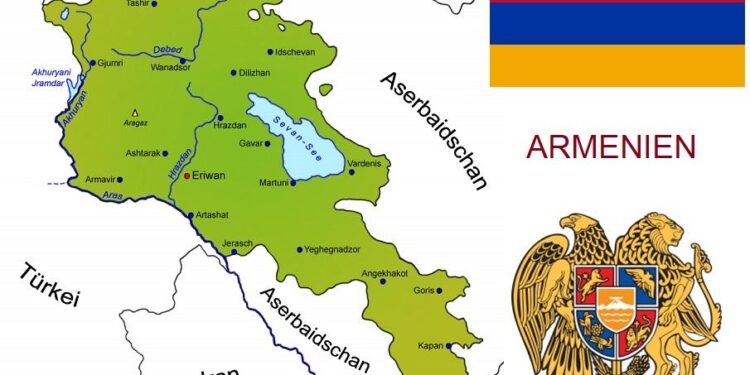Armenia and Azerbaijan stand at a critical juncture in their long-standing conflict as international mediators intensify efforts to finalize a comprehensive peace agreement. Following decades of hostilities over the Nagorno-Karabakh region, recent diplomatic breakthroughs have raised cautious hopes for lasting stability in the South Caucasus. The International Crisis Group, a leading conflict resolution organization, has underscored the urgent need to translate tentative accords into a durable peace deal, warning that delays could reignite tensions. This article examines the key challenges and prospects surrounding the push to get the Armenia-Azerbaijan peace agreement across the finish line.
Challenges in Finalizing the Armenia Azerbaijan Peace Agreement
Achieving a comprehensive settlement between Armenia and Azerbaijan remains hampered by a complex web of unresolved issues. Deep-seated distrust between the parties continues to undermine dialogue, while domestic political pressures in both countries constrain negotiators’ flexibility. Additionally, the lack of clarity over the status of Nagorno-Karabakh serves as a persistent stumbling block, preventing full consensus on territorial and security arrangements. External actors’ competing interests further complicate the landscape, creating a fracture in the mediation process and slowing progress toward actionable compromises.
Key obstacles include:
- Security guarantees: Defining mechanisms to ensure lasting peace without external interference.
- Refugee and IDP returns: Crafting safe, dignified, and politically acceptable conditions for displaced populations.
- Border delimitation: Agreeing on precise boundaries amidst contested historical claims.
- Economic cooperation: Establishing frameworks that encourage cross-border trade and infrastructure linking.
| Challenge | Impact on Agreement | Stakeholders Involved |
|---|---|---|
| Security Arrangements | Delayed ceasefire implementation | Military leaders, OSCE Minsk Group |
| Displacement Issues | Humanitarian tension and resettlement hurdles | Government agencies, international NGOs |
| Border Demarcation | Territorial disputes risk renewed clashes | Local authorities, border commissions |
| Economic Linkages | Stalled regional development opportunities | Business communities, regional organizations |
Key Obstacles and Opportunities for Sustainable Conflict Resolution
Despite recent advancements, the path to a durable peace between Armenia and Azerbaijan remains fraught with significant challenges. Lingering mistrust on both sides, fueled by decades of conflict and sporadic violence, continues to undermine confidence-building measures. Addition¬≠ally, the competing narratives around territory, sovereignty, and the rights of displaced populations have created deeply entrenched positions that complicate compromise. External actors’ geopolitical interests also exert pressure, often skewing negotiations and hindering consensus.
Yet, within this complex landscape lie critical openings that, if leveraged wisely, could catalyze a sustainable resolution. These include:
- Economic cooperation initiatives that incentivize peace through shared prosperity, especially in border areas.
- International mediation frameworks that maintain neutrality while facilitating transparent dialogue.
- People-to-people contacts aimed at breaking down stereotypes and fostering mutual understanding among younger generations.
| Obstacle | Opportunity |
|---|---|
| Mistrust & Security Concerns | Joint Security Commissions |
| Displaced Persons & Refugee Issues | Coordinated Humanitarian Programs |
| Competing Territorial Claims | Mutual Economic Zones in Contested Regions |
Strategic Recommendations for International Stakeholders to Secure Lasting Peace
The international community must prioritize a multifaceted approach that balances diplomacy, security guarantees, and economic incentives to propel the Armenia-Azerbaijan peace agreement to fruition. Sustained mediation efforts led by neutral parties can break entrenched distrust, while peacekeeping mechanisms-possibly under the auspices of the OSCE or UN-ensure adherence to ceasefire terms and reduce the risk of renewed hostilities. Additionally, fostering regional economic interdependence could act as a shock absorber to political tensions, encouraging cooperation through shared prosperity.
Concrete actions include:
- Establishing a joint monitoring commission with equal representation to oversee compliance and swiftly address violations.
- Investing in cross-border infrastructure projects to create tangible benefits and community-level interaction.
- Implementing guaranteed security corridors to facilitate safe movement and respect for cultural heritage sites.
- Supporting civil society exchanges to rebuild trust among populations historically divided by conflict narratives.
| Stakeholder | Role | Strategic Focus | |||||||||||
|---|---|---|---|---|---|---|---|---|---|---|---|---|---|
| International Organizations | Mediation & monitoring | Neutral peacekeeping forces, conflict resolution frameworks | |||||||||||
| Regional Powers | Security guarantees | Stabilizing border controls, arms reductions | |||||||||||
| Economic Stakeholders | Infrastructure development |
| Stakeholder | Role | Strategic Focus |
|---|---|---|
| International Organizations | Mediation & monitoring | Neutral peacekeeping forces, conflict resolution frameworks |
| Regional Powers | Security guarantees | Stabilizing border controls, arms reductions |
| Economic Stakeholders | Infrastructure development | Cross-border trade facilitation, joint investment projects |
If you want me to help integrate this with the rest of your document or refine the content further, please let me know!
The Way Forward
As Armenia and Azerbaijan edge closer to a comprehensive peace agreement, the international community’s continued support remains crucial in bridging longstanding divides. While challenges persist on both sides, recent diplomatic momentum offers a tangible pathway toward lasting stability in the South Caucasus. The coming weeks will be decisive in determining whether the peace process can move beyond rhetoric and toward durable reconciliation, underscoring the urgent need for sustained dialogue, confidence-building measures, and commitment to mutual compromise. The world watches closely as these two nations strive to turn the promise of peace into reality.
















